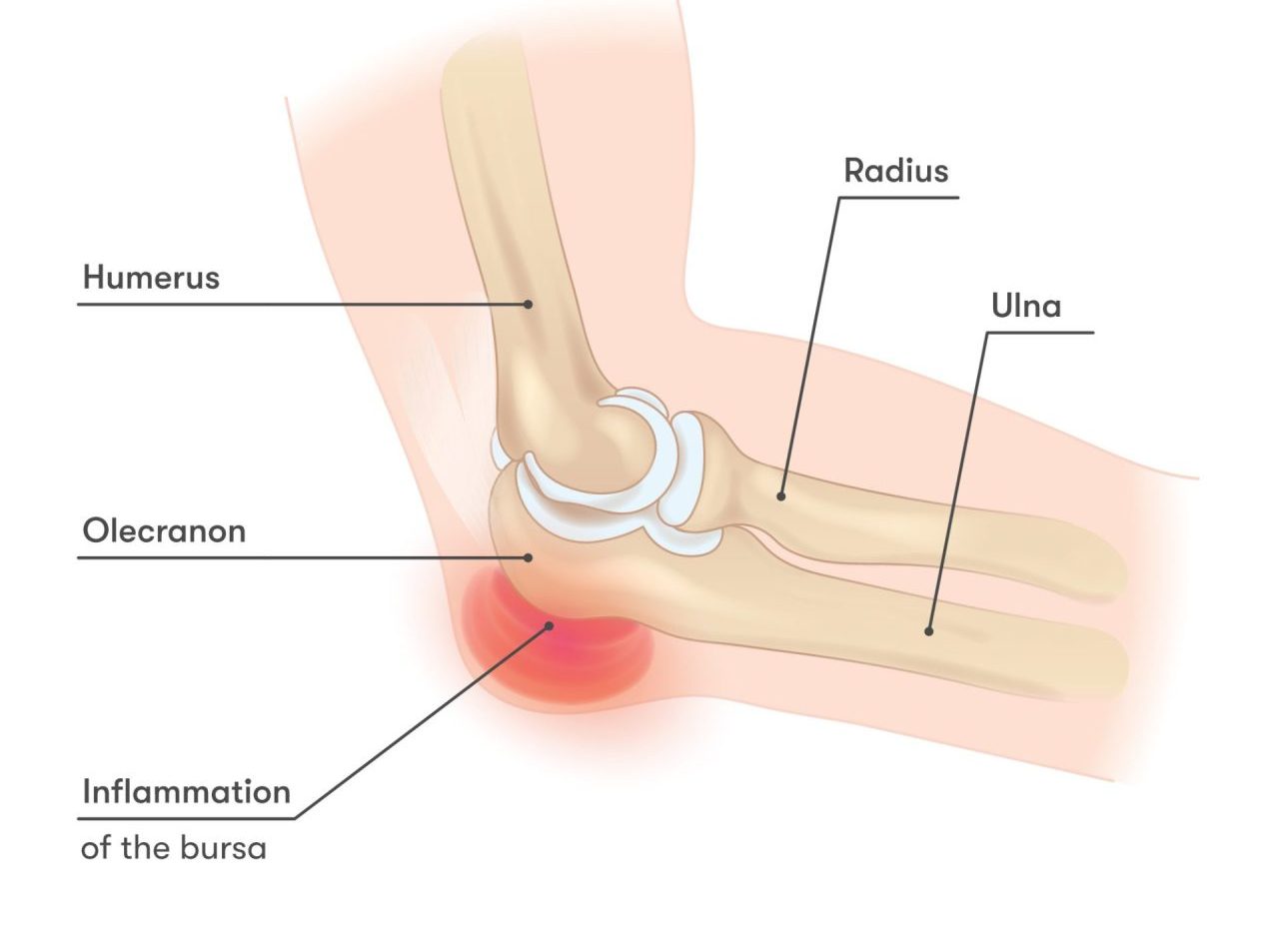Olecranon bursitis is a condition characterized by inflammation and swelling of the olecranon bursa, a small fluid-filled sac located at the back of the elbow. It can occur due to trauma, repetitive friction, infection, or underlying medical conditions such as gout or rheumatoid arthritis.
Managing olecranon bursitis involves a comprehensive approach using the 5 stages of rehab, which includes:
- Pain management: The initial focus is on reducing pain and inflammation in the affected area. Physiotherapists employ various techniques such as ice therapy, compression, taping and bracing to provide pain relief and reduce swelling. They may also recommend rest and activity modification to avoid further irritation.
- Range of motion: Once pain and inflammation are under control, the emphasis shifts to restoring normal range of motion in the elbow joint. Physiotherapists prescribe gentle stretching and range of motion exercises to improve flexibility and alleviate stiffness. These exercises aim to gradually increase the elbow’s mobility without exacerbating the symptoms.
- Motor control: This stage focuses on improving neuromuscular control and stability around the elbow joint. Physiotherapists prescribe specific exercises to enhance muscle activation and stability in the forearm, upper arm, and shoulder. They may incorporate proprioceptive training and balance exercises to improve motor control and coordination.
- Strengthening: Strengthening the surrounding muscles is crucial for supporting the elbow joint and preventing future episodes of bursitis. Range physiotherapists will design a personalized exercise program that targets the muscles in the forearm, upper arm, and shoulder. This may include resistance exercises using bands or weights to gradually build strength and stability.
- Maintenance: The final stage focuses on maintaining the gains achieved through rehabilitation and preventing recurrence. Range physiotherapists will provide guidance on protecting the affected joint, modifying activities to reduce stress, and incorporating regular exercise into daily routines. They may also advise individuals on proper body mechanics and techniques to avoid repetitive trauma.
In addition to physiotherapy, other treatment options for olecranon bursitis may include the use of nonsteroidal anti-inflammatory drugs (NSAIDs) to manage pain and inflammation. In some cases, aspiration of fluid from the bursa, or corticosteroid injections, may be necessary to alleviate symptoms.
It is important to work closely with a qualified physiotherapist who specializes in treating olecranon bursitis. Range physiotherapists will assess your condition, develop a tailored treatment plan based on the 5 stages of rehab, and monitor progress throughout the rehabilitation process. With proper treatment, exercises, and modifications to activities, individuals with olecranon bursitis can experience significant pain reduction, improved joint mobility, and a return to their desired level of activity.
For more information regarding olecranon bursitis please see: https://www.physio-pedia.com/Olecranon_Bursitis?utm_source=physiopedia&utm_medium=search&utm_campaign=ongoing_internal


